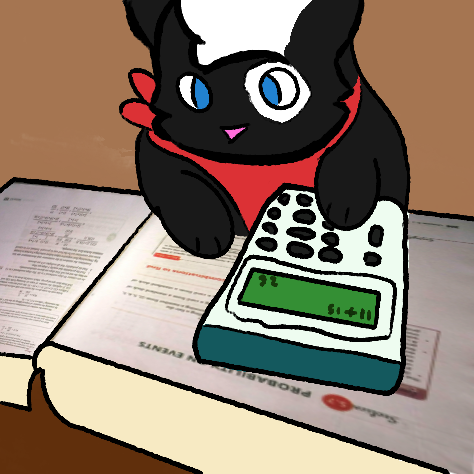Day 13
Let’s do some more maths!
The input
In order to parse the input, I split it by chunks separated by two line breaks.
These chunks have the form:
Button A: X\+([0-9]+), Y\+([0-9]+)
Button B: X\+([0-9]+), Y\+([0-9]+)
Prize: X=([0-9]+), Y=([0-9]+)
I simply use a Regex to parse each chunk, and I store the resulting values inside two matrices:
The first one represents the A and B coefficients the second one represents the prize’s coordinates.
I use a Matrix of Rationals instead of Int for reasons I’ll explain later.
type Input = [(Matrix Rational, Matrix Rational)]
parseInput :: String -> Input
parseInput = map parseMachine . splitOn "\n\n"
where parseMachine :: String -> (Matrix Rational, Matrix Rational)
parseMachine machine = (coefs, result)
where [_ : numStr] = (machine =~
"Button A: X\\+([0-9]+), Y\\+([0-9]+)\n\
\Button B: X\\+([0-9]+), Y\\+([0-9]+)\n\
\Prize: X=([0-9]+), Y=([0-9]+)") :: [[String]]
numbers = map (fromIntegral . read) numStr
coefs = fromList 2 2 $ take 4 numbers
result = fromList 1 2 $ drop 4 numbers
Part 1 and 2
The problem
Now, what we want to do is basically solve the following system of equations:
- Xa * Ka + Xb * Kb = Xtarget
- Ya * Ka + Yb * Kb = Ytarget
Where Ka and Kb are integers, and the others variables are our input.
The solution
In order to do that, I saw three possibilities:
- The easy way: use a SAT Solver
- The long way: solve the two diophantine equations and find the smallest common solution.
- The smart way: solve the system (using matrices because we’re using computers and computers love matrices)
I have decided to do things the smart way:
Suppose we want to solve the following system:
Button A: X+94, Y+34
Button B: X+22, Y+67
Prize: X=8400, Y=5400
I have represented this with the two following matrices:
( 94 34 )
( 8400 5400 ) ( 22 67 )
let’s call them respectively Y and A
Then, our system is the following:
- XA = Y
Let’s solve it (hard!): XA = Y => XAA^-1 = YA^-1 => X = YA^-1
So, all we have to do is to invert the A matrix, and multiply Y by A to get our solution!
computeNumPresses :: (Matrix Rational, Matrix Rational) -> Matrix Rational
computeNumPresses (a, y) = multStd y a'
where Right a' = inverse a
This is why Rational coefficients were important: I can invert the matrix without losing precision
Now, let’s note here that I’m assuming that the matrix is invertible. If it weren’t then there wouldn’t be any solution (even non-integer ones), which is unlikely.
However, if your input does have non-invertible matrices, it’s fine, simply return a default value which has non integer coefficient and enjoy the rest of this writeup! :)
Now that I have solved this problem, I need to compute the token price:
- That is multiply the number of times A is pressed by 3, and the number of times B is pressed by 1.
But what about non-integer solutions ?
Well, if my coefficient is not an integer, this means that the denominator is not 1, therefore let’s put its price to 0 in order to not count it.
getTokenPrice :: Matrix Rational -> Integer
getTokenPrice a
| isIntegerSolution = sum $ zipWith (*) (map numerator values) [3, 1]
| otherwise = 0
where values = toList a
isIntegerSolution = all ((== 1) . denominator) values
Now, we compute the number of presses of each button for each machine, we get the token price for each solution, and we add them all together!
partOne :: Input -> Output
partOne = sum . map (getTokenPrice . computeNumPresses)
For part two, we do the same, but we add an offset to the target coordinates beforehand:
addOffset :: Matrix Rational -> Matrix Rational
addOffset = elementwise (+) (fromLists [[10_000_000_000_000, 10_000_000_000_000]])
partTwo :: Input -> Output
partTwo = partOne . map (second addOffset)
The end part
That was probably one of the easiest days so far tbh
